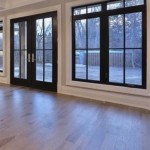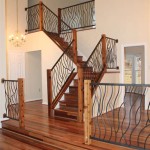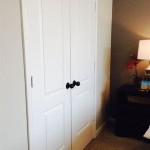Brick Veneer For Interior Walls: A Comprehensive Guide
Brick veneer, a popular choice for exterior cladding, is increasingly finding its place within interior design. Its ability to impart a rustic, industrial, or classic aesthetic makes it a versatile option for homeowners and designers alike. This comprehensive guide explores the nuances of using brick veneer for interior walls, covering aspects from material selection and installation to design considerations and maintenance.
Brick veneer differs significantly from full-thickness brick. It consists of thin slices of brick, typically ranging from ½ inch to 1 ¼ inches in thickness. This reduced depth translates to a lighter material, making it significantly easier and less expensive to install compared to building a wall with traditional bricks. Furthermore, brick veneer does not require structural support in the same way that a load-bearing brick wall does, broadening its applicability to various interior spaces.
The aesthetic appeal of brick veneer stems from its authentic brick appearance. It is available in a wide array of colors, textures, and sizes, mimicking the look of various brick styles, from reclaimed Chicago brick to smooth, modern pavers. This diversity allows for creating a vast range of interior designs, complementing styles from farmhouse chic to contemporary minimalist.
Material Options for Interior Brick Veneer
The selection of appropriate brick veneer material is crucial for a successful interior wall application. Various materials are available, each with distinct properties and aesthetic characteristics. Understanding these differences is important for making informed decisions aligned with the desired design and performance.
One common type of brick veneer is made from actual clay brick that has been sliced into thinner profiles. This option provides an authentic brick appearance and is known for its durability and resistance to staining and fading. Clay brick veneer is relatively porous, so sealing may be required, particularly in areas prone to moisture or spills. It is a classic choice that adds character to various interior spaces.
Concrete brick veneer is another popular choice. Manufactured from a mixture of cement, aggregates, and pigments, concrete veneer offers a wide range of color and texture options. It tends to be less expensive than clay brick veneer and is generally easier to install due to its consistent size and shape. Concrete brick veneer can be manufactured to mimic the look of various natural stones and bricks. It is also relatively durable and can be sealed for enhanced protection against moisture and staining.
Faux brick veneer, often made from polyurethane or other synthetic materials, offers a lightweight and cost-effective alternative. Faux brick panels are relatively easy to install and are available in interlocking designs for seamless integration. While faux brick veneer does not possess the same authentic texture and durability as clay or concrete options, it is a good option for budget-conscious projects and for applications where weight is a significant factor. It is also often easier to clean than traditional brick veneer.
Reclaimed brick veneer is sourced from demolished buildings. This option provides a unique and environmentally conscious solution, adding character and history to interior spaces. Reclaimed brick veneer typically showcases a weathered appearance with variations in color and texture, which enhances its authenticity. Finding a consistent supply of reclaimed brick veneer can be challenging, and the pieces may require more preparation before installation. However, the distinctive charm and sustainable nature of reclaimed brick veneer make it a highly desirable choice for many designers and homeowners.
Installation Techniques for Interior Brick Veneer
Proper installation techniques are essential for ensuring the longevity and aesthetic appeal of an interior brick veneer wall. The installation process generally involves preparing the wall surface, applying an adhesive mortar, and carefully positioning the brick veneer pieces.
The first step is preparing the wall surface. The surface must be clean, dry, and structurally sound. Any loose paint, wallpaper, or debris must be removed. For drywall or plaster walls, priming the surface with an appropriate bonding agent is recommended to improve adhesion. If the wall is uneven, applying a leveling compound may be necessary to create a smooth and consistent surface for the brick veneer.
Applying the adhesive mortar is a crucial step. A high-quality thin-set mortar specifically designed for brick veneer should be used. The mortar should be mixed according to the manufacturer's instructions to achieve the correct consistency. The mortar is applied to the back of each brick veneer piece and to the wall surface using a notched trowel. The notched trowel creates ridges in the mortar, which improves adhesion and allows for proper airflow. It is important to work in small sections to prevent the mortar from drying out before the brick veneer is applied.
Positioning the brick veneer pieces requires precision and attention to detail. Each piece should be pressed firmly into the mortar, ensuring proper alignment and spacing. Spacers can be used to maintain consistent grout lines between the brick veneer pieces. It is important to check the level and plumb of the brick veneer as the installation progresses. Any excess mortar should be wiped away with a damp sponge to prevent staining. The installation process can be time-consuming, so patience is key to achieving a professional-looking result.
Once the brick veneer is installed, the grout lines need to be filled. Grouting can be done using a grout bag or a grout float. The grout should be applied evenly and packed tightly into the joints. Excess grout should be removed with a damp sponge, ensuring that the brick veneer surface is clean. The grout should be allowed to cure according to the manufacturer's instructions before applying a sealant. Sealing the grout lines helps to protect them from staining and moisture damage.
Finally, after the grout has cured, the brick veneer can be sealed. Sealing helps to protect the brick veneer from staining and moisture damage and also enhances its durability. A breathable sealant specifically designed for brick veneer should be used. The sealant should be applied evenly according to the manufacturer's instructions. Regular cleaning and maintenance are essential for preserving the appearance of the brick veneer wall. Periodic cleaning with a mild detergent and water will help to remove dirt and grime. Any stains should be cleaned immediately to prevent them from setting in.
Design Considerations for Interior Brick Veneer Walls
Incorporating brick veneer into interior design requires careful planning and consideration to ensure a cohesive and aesthetically pleasing result. The size and layout of the room, the existing architectural elements, and the desired style all influence the design decisions. The color and texture of the brick veneer should complement the overall color scheme and décor of the space.
Brick veneer can be used to create a variety of design effects. A full brick veneer wall can serve as a dramatic focal point, adding texture and depth to a room. A partial brick veneer wall can be used to define a specific area, such as a fireplace surround or a kitchen backsplash. Brick veneer can also be used to create architectural details such as arches, columns, and niches. Exposed brick veneer walls can add a touch of rustic charm to a modern space.
The color of the brick veneer plays a significant role in the overall aesthetic. Red brick veneer imparts a classic and traditional look, while white or gray brick veneer lends a more contemporary feel. Darker brick veneer colors can create a sense of drama and sophistication, while lighter colors can brighten up a space and make it feel more open. The texture of the brick veneer also contributes to the overall design. Smooth brick veneer offers a sleek and modern aesthetic, while rough or textured brick veneer adds character and visual interest.
Lighting plays a critical role in showcasing the beauty of a brick veneer wall. Natural light enhances the texture and color variations of the brick, while artificial lighting can be used to create different moods and effects. Spotlights can be used to highlight specific areas of the wall, while ambient lighting can create a warm and inviting atmosphere. It is important to consider the placement and type of lighting to maximize the impact of the brick veneer wall.
Furnishings and accessories should be chosen to complement the brick veneer wall. Minimalist furniture and décor work well with a modern brick veneer wall, while rustic or vintage furnishings enhance the charm of a traditional brick veneer wall. The colors and textures of the furnishings should harmonize with the brick veneer to create a cohesive design. Plants can add a touch of life and freshness to a brick veneer wall, while artwork can provide a focal point and add personality to the space. The overall goal is to create a balanced and harmonious design that reflects the homeowner's personal style.

How To Install Antique Thin Brick Veneer Experienced And Stone

Brick Interior Faux Vs Real

How To Install Antique Thin Brick Veneer Experienced And Stone

Install Brick Veneer Like A Pro Make Your Home More Beautiful

How To Install Thin Brick Veneer Interior And Exterior Installation

How To Install Antique Thin Brick Veneer Experienced And Stone

Faux Brick Veneer Wall Vintage Revivals

How To Install Antique Thin Brick Veneer Experienced And Stone

Brick Interior Faux Vs Real

How To Install Brick Veneer On A Wall
Related Posts








